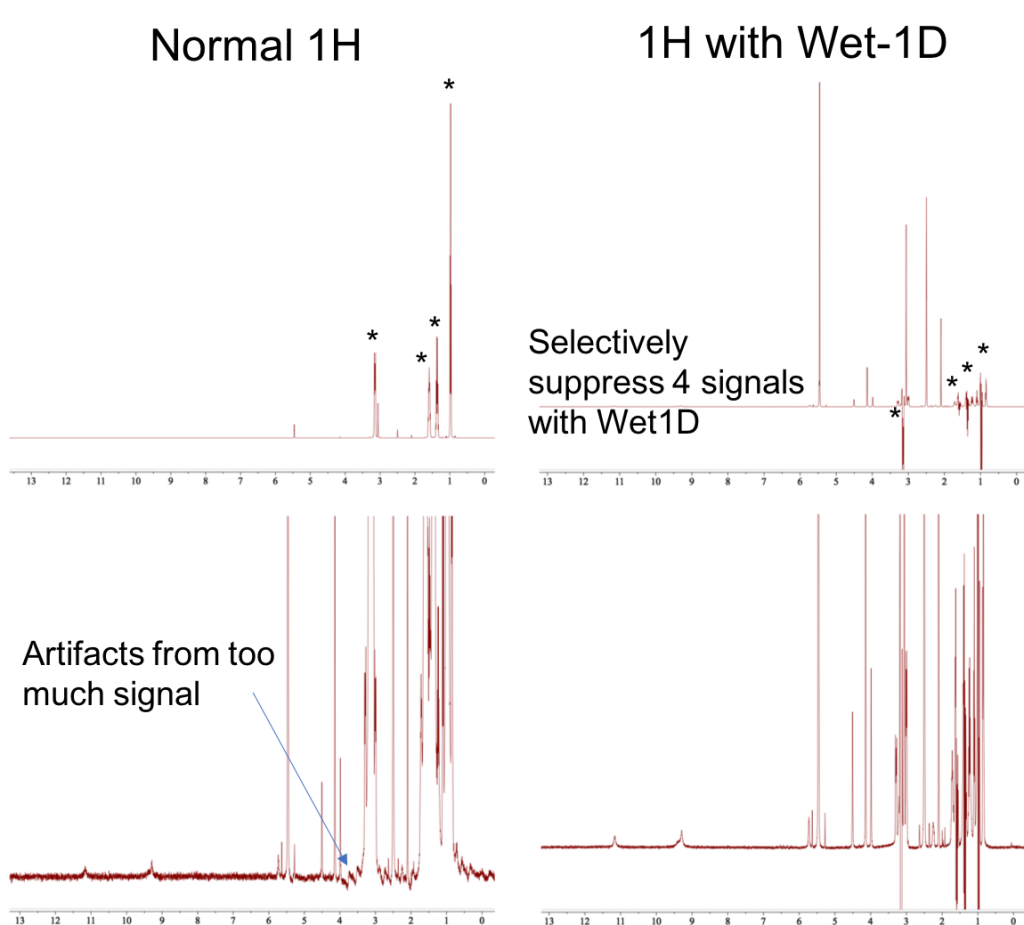6a) Wet-1D, for Peak Saturation
Wet1D is a suppression technique where you can selectively kill large signals (up to 5) so that they are suppressed, and your smaller peaks will become more observable. There are often artifacts with this method, particularly near the saturated peaks and especially when attempting to saturate more than one signal. But this is an excellent tool for when you want to observe small compounds that are drowned-out by large peaks. In this example, 0.1M of compound A is drowning out signals of interest from 0.1mM of Compound B. We use the Wet1D experiment to suppress peaks from Compound A, this way the dynamic range of the receiver can be set to better observe small signals from Compound B.

6b – 1H Homonuclear Decoupling
The H-H Homonuclear Decoupling experiment allows one to selectively irradiate a chosen 1H peak during 1H acquisition. Typically one choses a duty cycle, say 10 or 15%, where selective irradiation/decoupling is cycled on (15%) and off (85%), and data is collected during these off periods. Since the chosen irradiated signal now collapses, any other peak that J-couples to the irradiated peak will no longer J-couple, so it’s multiplet will collapse and simplify. This allows one to identify the coupling network, i.e., determine what protons are coupled. Since the multiplet is simplified, it can also allow one to measure the J value for the remaining coupling. In this video, we show how to set up 1H HomoDec experiment on VnmrJ using a sample compound trans-ethylcrotonate
